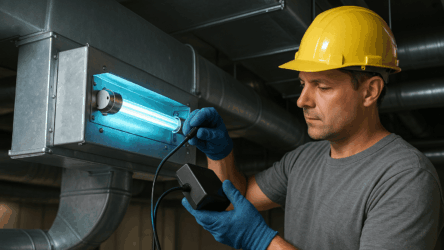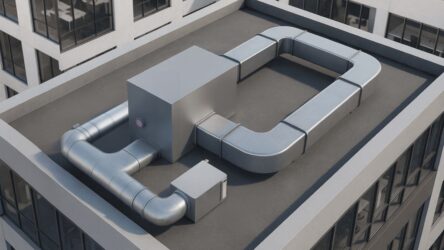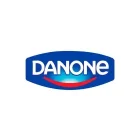Indoor air quality has a direct impact on health, comfort, and overall well-being. While air conditioning systems are primarily designed for cooling and ventilation, they can also be optimized for air disinfection. By integrating germicidal ultraviolet lamps, air conditioners become effective air purification units, eliminating bacteria, viruses, mold, and other harmful microorganisms to ensure a healthier indoor environment.
How UV lamps enhance air conditioning systems
Air conditioners function by circulating air through a heat exchanger, cooling it before redistributing it back into the space. These systems range from compact split units in residential settings to large-scale industrial HVAC installations. However, air conditioning units can accumulate moisture, creating an ideal environment for bacterial and fungal growth inside ducts and cooling coils.
UV lamps neutralize airborne pathogens by disrupting their DNA and RNA, preventing their reproduction. When installed inside an air conditioning system, UV lamps:
- Destroy microorganisms present in circulating air
- Prevent mold and bacterial growth on cooling coils
- Improve overall air hygiene without the use of chemical disinfectants
Integrating UV lamps into air conditioners
Equipping air conditioning systems with quartz-based UV lamps transforms them into continuous air disinfection units. This is a cost-effective and efficient method of improving air quality without requiring additional air purification systems.
Steps for integrating UV lamps into an air conditioning system
- Determining the installation location – UV lamps should be placed inside the airflow circulation zone, typically near the heat exchanger or evaporator coil to maximize exposure.
- Choosing the right UV lamps – The power, wavelength, and number of lamps must be selected based on air volume and system capacity to achieve optimal disinfection.
- Ensuring proper installation and protection –
- Securely mount the lamps within the air conditioner.
- Install power supply units in designated compartments.
- Prevent UV exposure to plastic components, as prolonged radiation can cause degradation.
- Use protective sheathing for electrical wiring to ensure system longevity.
- Maintaining the system – Regular lamp performance checks and replacements are required to sustain peak disinfection efficiency.
UV disinfection in air conditioners is particularly valuable in:
- Medical and laboratory environments
- Food processing and pharmaceutical production
- Warehouses and industrial storage facilities
- Hotels, offices, and public buildings
Why choose UVL’s UV lamps for air conditioning systems?
UVL offers tailored solutions for integrating UV disinfection technology into air conditioners. Key benefits include:
- Customized UV lamp selection based on system specifications
- Installation guides for seamless integration into HVAC units
- Certified components ensuring regulatory compliance
- Technical consultation and performance assessments for optimized results
With UVL’s expertise, air conditioning systems evolve beyond cooling—they become active air purification units, contributing to a healthier, safer indoor environment.
Conclusion
Integrating germicidal UV lamps into air conditioners represents a forward-thinking approach to indoor air sanitation. As air quality standards continue to rise, UV disinfection technology is becoming an essential addition to modern HVAC systems. By implementing UVL’s advanced solutions, businesses and homeowners can ensure superior air hygiene, improved occupant health, and compliance with modern safety standards.







